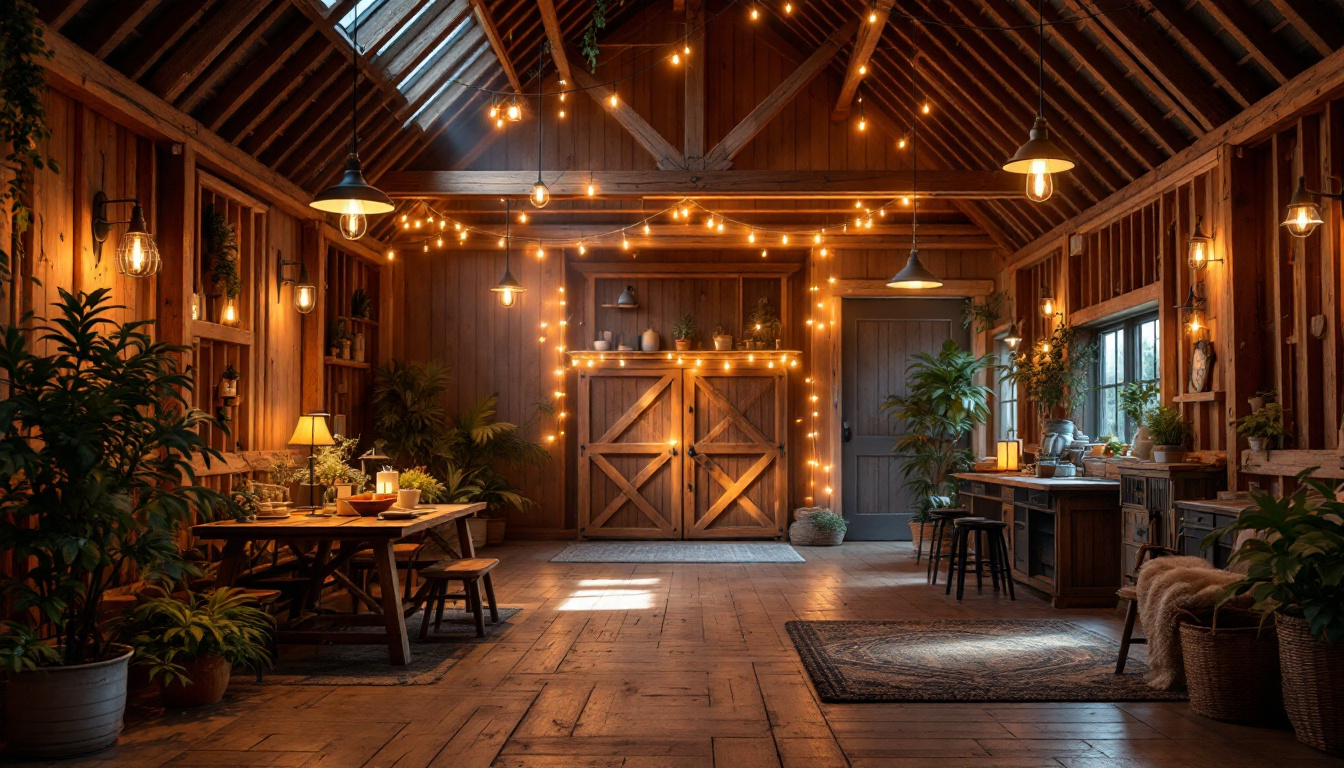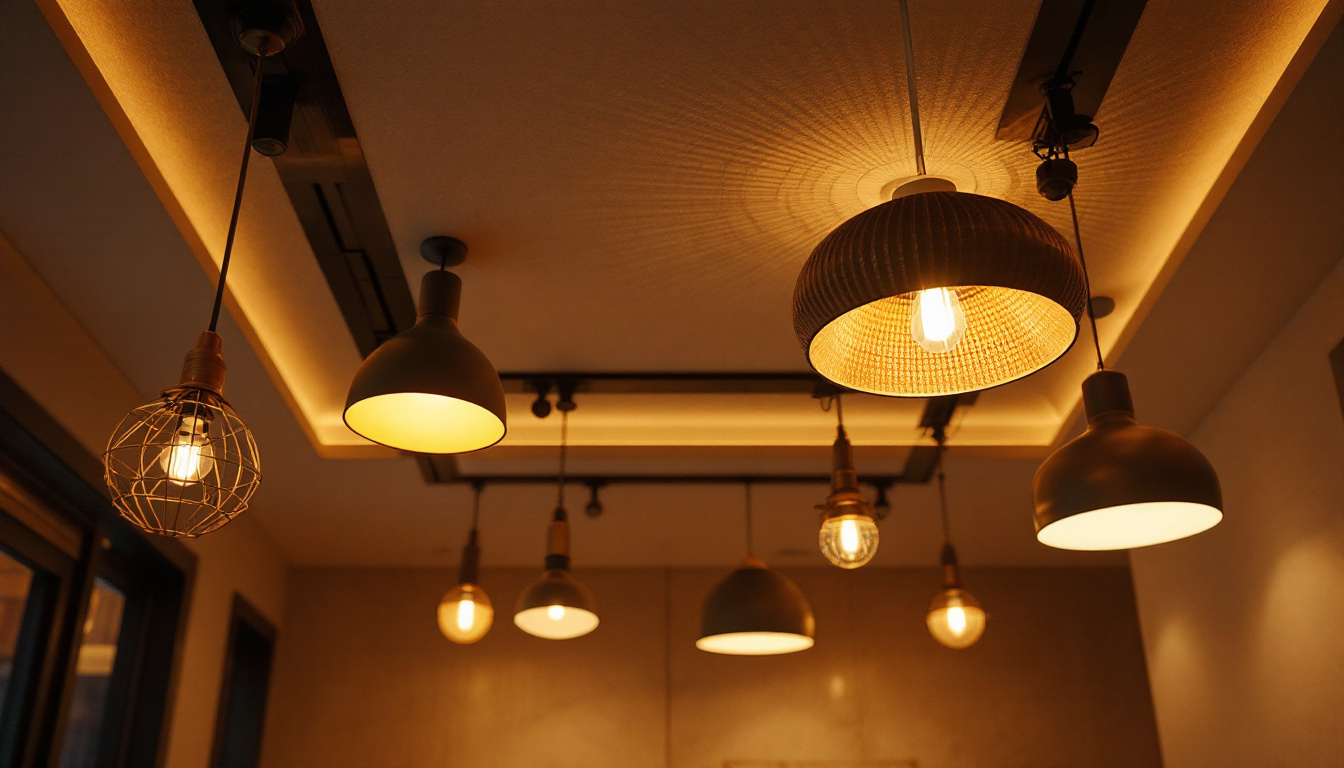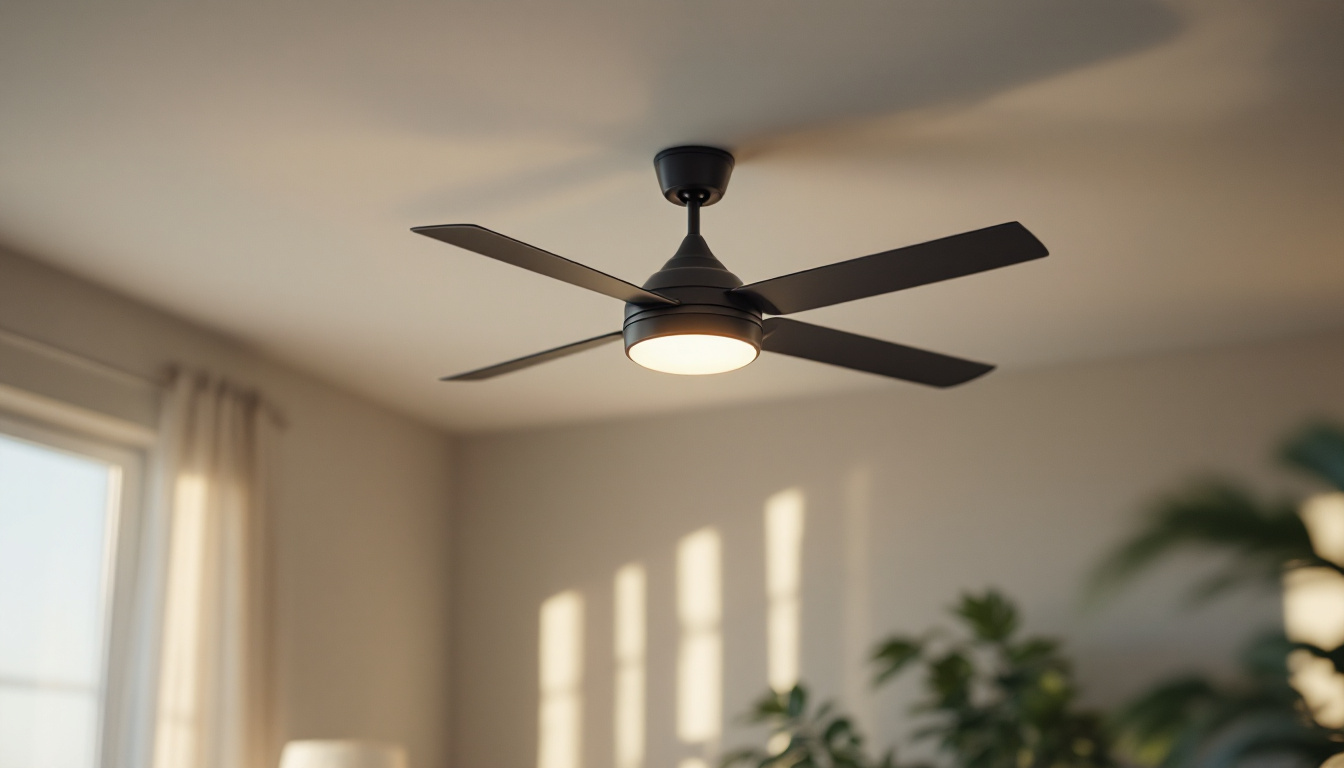
When it comes to illuminating barns, the choice of lighting fixtures plays a crucial role in functionality, aesthetics, and safety. Barns are not just storage spaces for equipment or livestock; they can also serve as event venues, workshops, or even homes. This multifaceted use necessitates a thoughtful approach to lighting design.
Lighting contractors must consider various factors such as the barn’s purpose, the type of activities conducted within, and the overall ambiance desired. Understanding the different types of barn lighting fixtures available can help contractors make informed decisions that enhance both utility and visual appeal.
There are several types of fixtures that are popular in barn settings, each serving distinct purposes. For instance, pendant lights are often used for their aesthetic appeal and ability to provide focused illumination. They can be hung at varying heights to create a layered lighting effect, adding a touch of charm to the rustic environment.
In contrast, LED floodlights are excellent for providing broad, even lighting across large areas, making them ideal for outdoor spaces or expansive interiors. These fixtures not only enhance visibility during late-night activities but also contribute to the safety of both animals and humans. Additionally, wall-mounted fixtures can help illuminate pathways and entrances, ensuring safety and accessibility. The strategic placement of these fixtures can create a welcoming atmosphere while also deterring potential intruders.
When selecting barn lighting fixtures, contractors should consider the barn’s layout, the height of the ceilings, and the specific tasks performed in different areas. For example, a barn used for livestock may require brighter, more uniform lighting to ensure safety and visibility, while a barn converted into an event space may benefit from softer, ambient lighting that enhances the overall experience for guests.
Energy efficiency is another critical factor. Opting for LED fixtures can significantly reduce energy costs while providing long-lasting illumination. Moreover, the color temperature of the lights can influence the mood and functionality of the space, making it essential to choose wisely. Warmer tones can create a cozy and inviting atmosphere, perfect for social gatherings, while cooler tones may be more suitable for workspaces where clarity and focus are paramount. Additionally, incorporating dimmable options can offer versatility, allowing users to adjust the lighting according to their needs, whether for a lively event or a quiet evening of work.
Furthermore, the installation of smart lighting systems can enhance the functionality of barn lighting. These systems allow for remote control and automation, enabling users to schedule lighting based on their routines or specific events. This not only adds convenience but also promotes energy savings by ensuring that lights are only used when necessary. Additionally, integrating motion sensors can provide added security, automatically illuminating areas when movement is detected, thus enhancing safety for both livestock and property. With these considerations in mind, lighting design can transform a barn into a well-lit, versatile space that meets the diverse needs of its users.
Successful barn lighting installation hinges on a set of best practices that contractors should follow. These guidelines can help ensure that the lighting is not only effective but also enhances the overall experience within the barn.
Before installing any lighting fixtures, it is essential to conduct a thorough assessment of the barn’s layout and intended use. This includes measuring the height of the ceilings, identifying areas that require more light, and considering the activities that will take place in each section.
By understanding the spatial dynamics, contractors can strategically place fixtures to maximize light distribution and minimize shadows, ensuring a well-lit environment for all activities. Additionally, assessing the barn’s architectural features, such as windows and doors, can provide natural light sources that complement artificial lighting. Utilizing a combination of natural and artificial light can create a more inviting atmosphere, reducing energy costs and enhancing the overall aesthetic.
Selecting the appropriate fixtures is vital for achieving the desired lighting effect. For instance, using high-bay lights in areas with high ceilings can provide adequate illumination for tasks that require precision, such as maintenance or repairs.
Additionally, incorporating dimmable fixtures can offer flexibility, allowing users to adjust the lighting based on the time of day or specific activities. This adaptability can enhance the functionality of the barn, making it suitable for various uses. Moreover, considering energy-efficient options, such as LED fixtures, not only reduces electricity consumption but also contributes to a longer lifespan for the lighting system, minimizing replacement costs over time. The right choice of fixtures can also enhance the barn’s design, allowing for a blend of practicality and style.
Safety should always be a top priority when installing barn lighting fixtures. Ensure that all fixtures are rated for the environment in which they will be installed, particularly in areas where moisture or dust may be present. Using fixtures with appropriate IP ratings can protect against water and dust ingress.
Furthermore, consider the placement of fixtures to avoid glare and shadows that could lead to accidents. Adequate lighting in walkways, entrances, and work areas is essential for maintaining a safe environment. In addition to proper fixture placement, it is crucial to implement regular maintenance checks to ensure that all lighting systems are functioning correctly. This includes replacing burnt-out bulbs promptly and cleaning fixtures to prevent dust buildup, which can diminish light output. Creating a routine maintenance schedule can help sustain a safe and well-lit barn environment, ultimately enhancing productivity and comfort for all users.
While there are many best practices to follow, there are also common pitfalls that lighting contractors should avoid during barn lighting installation. Recognizing these missteps can save time, resources, and ensure a successful outcome.
In an era where energy costs are continually rising, overlooking energy efficiency can lead to significant long-term expenses. Contractors should prioritize energy-efficient lighting options, such as LED fixtures, which consume less power and have a longer lifespan compared to traditional incandescent bulbs.
Additionally, consider incorporating smart lighting systems that can be programmed to turn off when not in use or adjust based on natural light levels. This not only reduces energy consumption but also enhances the overall sustainability of the barn.
While functionality is paramount, ignoring the aesthetic aspect of barn lighting can detract from the overall appeal of the space. Lighting fixtures should complement the barn’s architecture and interior design. For example, rustic-style fixtures may enhance the charm of a traditional barn, while sleek, modern designs may be more suitable for contemporary conversions.
Balancing functionality with aesthetics can create a welcoming atmosphere that enhances the barn’s purpose, whether it be for agricultural use or hosting events.
Maintenance is a critical aspect of lighting that is often overlooked during the installation phase. Contractors should consider the ease of access to fixtures for cleaning and bulb replacement. Fixtures that are difficult to reach may lead to prolonged periods of inadequate lighting if maintenance is not regularly performed.
Choosing durable materials that withstand the barn’s environment can also minimize maintenance needs, ensuring that the lighting remains effective and visually appealing over time.
As technology continues to advance, innovative lighting solutions are emerging that can enhance barn lighting. These solutions not only improve functionality but also contribute to energy efficiency and user satisfaction.
Smart lighting systems offer a level of control and customization that traditional lighting cannot match. These systems can be programmed to adjust based on occupancy, time of day, or even weather conditions. For instance, lights can automatically brighten when someone enters the barn or dim during the night to save energy.
Moreover, smart systems can be integrated with mobile apps, allowing users to control the lighting remotely. This feature is particularly useful for barns that serve multiple purposes, as it enables quick adjustments based on specific needs.
For barns located in remote areas or where electricity access is limited, solar-powered lighting can be a game-changer. Solar fixtures harness sunlight during the day and convert it into energy for nighttime use. This not only reduces reliance on grid power but also lowers energy costs significantly.
Modern solar lights come equipped with advanced technology, such as motion sensors and automatic dimming features, making them both efficient and practical for barn environments.
Task-specific lighting is another innovative solution that can enhance the functionality of barn spaces. This type of lighting focuses on illuminating specific areas where detailed work is performed, such as maintenance stations or workbenches.
Using adjustable fixtures that can be directed to provide concentrated light where needed can improve visibility and reduce eye strain during intricate tasks. This targeted approach ensures that every corner of the barn is adequately lit for its intended purpose.
In conclusion, the installation of barn lighting fixtures requires careful consideration of various factors, including the barn’s purpose, layout, and aesthetic appeal. By following the do’s and don’ts outlined in this article, lighting contractors can create effective, safe, and visually pleasing lighting solutions that enhance the functionality of barns.
Embracing innovative technologies, such as smart lighting systems and solar-powered options, can further elevate the lighting experience, making barns more adaptable and energy-efficient. Ultimately, the goal is to create a well-lit environment that meets the diverse needs of barn users while ensuring safety and sustainability.
Ready to elevate your barn lighting installations with the highest quality fixtures at unbeatable prices? Look no further than LumenWholesale. Our spec-grade lighting products are designed to meet the diverse needs of your projects, ensuring safety, sustainability, and aesthetic appeal. With free shipping on bulk orders and no middleman markups, you can trust LumenWholesale to provide premium lighting solutions that blend quality with affordability. Don’t compromise on excellence; choose LumenWholesale for Wholesale Lighting at the Best Value and make your next lighting project shine.

Discover the ultimate metal halide to LED conversion contractor checklist to boost energy efficiency, reduce costs by up to 50%, and ensure seamless lighting upgrades..

Discover the top strategies lighting contractors use to select and install ceiling fixtures that transform spaces.

Discover essential tips for lighting contractors to maximize their profits during ceiling fan sales.

Discover the latest trends in four-way switches that every lighting contractor needs to stay ahead in the industry.